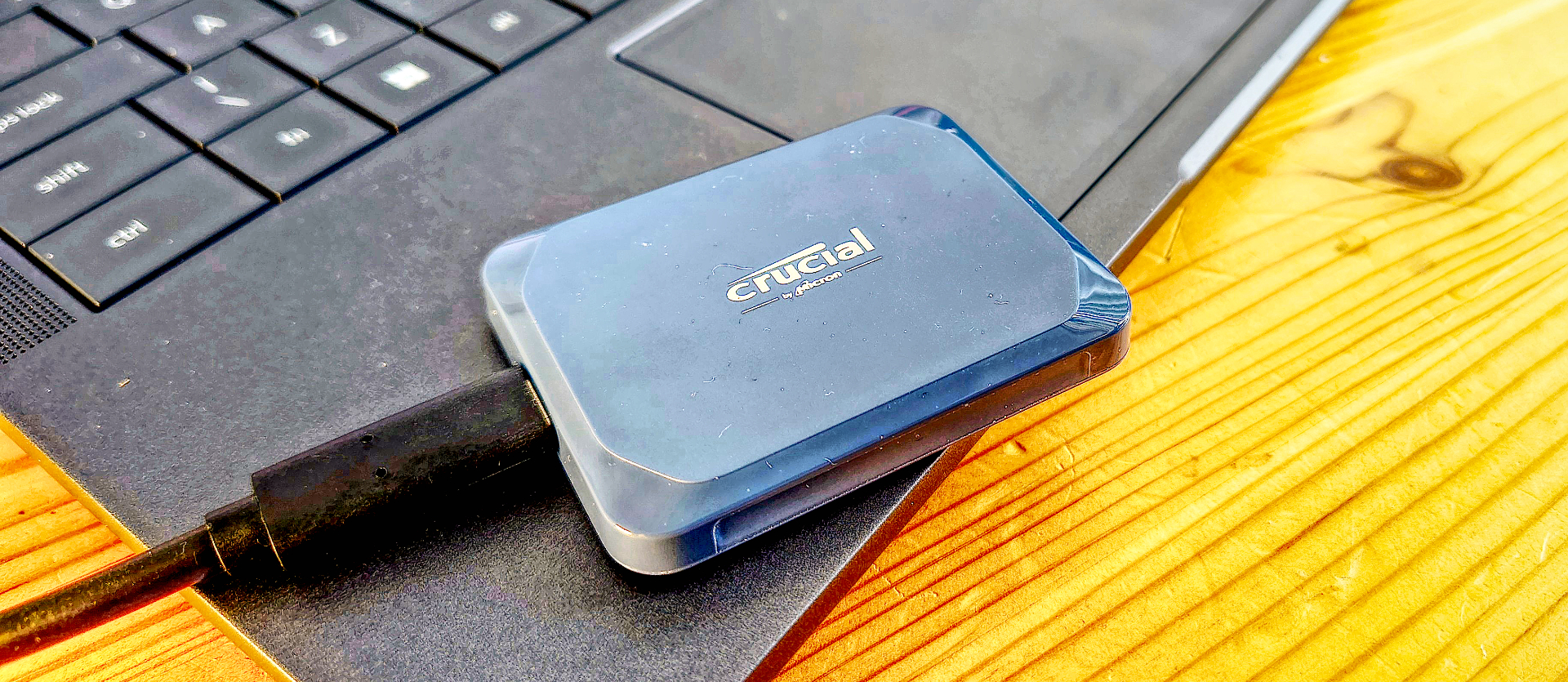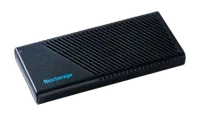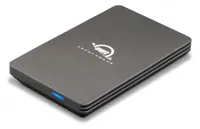TechRadar Verdict
The best things about the X10 are the increased capacities and some modest improvements in ruggedness. However, these gains come at the expense of lacking hardware encryption and plastic construction. Is the appearance of the X10 to Crucial’s benefit or ours?
Pros
- +
USB 3.2 Gen 2x2 support
- +
6TB and 8TB options
- +
Tough and compact
Cons
- -
USB-A cable adapter costs extra
- -
No hardware encryption
- -
Lacks official USB 4 support
Why you can trust TechRadar
Crucial X10: 30-second review
While technically not the first SSD that Crucial produced, the introduction of the X8 in 2019 marked a turning point for this brand and initiated a wildly successful product line.
The more affordable X6 followed shortly thereafter, and then the superior X9 Pro and X10 Pro in 2023. Many consider these to be go-to solutions for portable storage.
Due to its name, the new X10 (non-pro) model may go unnoticed by many, just as the X9 has. These are, in essence, rationalisation solutions that are as much about making popular products cheaper for Crucial (Micron) to manufacture as they are about maintaining profit margins in the face of global economic challenges.
The new X10 features plastic construction rather than metal, but its flash memory matches the performance levels of the X10 Pro, if not slightly better.
It’s also more rugged. Its IP rating was upgraded to IP65 from the IP55 that the X10 Pro had. However, as Crucial gives with one hand, it takes away with the other, as the X10 doesn’t include hardware encryption of the drive —a feature that the X10 Pro offers.
However, in one critical aspect, it surpasses the X10 Pro substantially, in that the X10 offers 6TB and 8TB options, whereas the X10 Pro and X9 Pro were both limited to a maximum of 4TB.
Overall, unless you specifically need hardware encryption, the X10 is a better option than the X10 Pro or X9 Pro, and it comes with up to double the capacity. Crucial undoubtedly deserves to make our list of the best portable SSD with the X10.
Sign up to the TechRadar Pro newsletter to get all the top news, opinion, features and guidance your business needs to succeed!
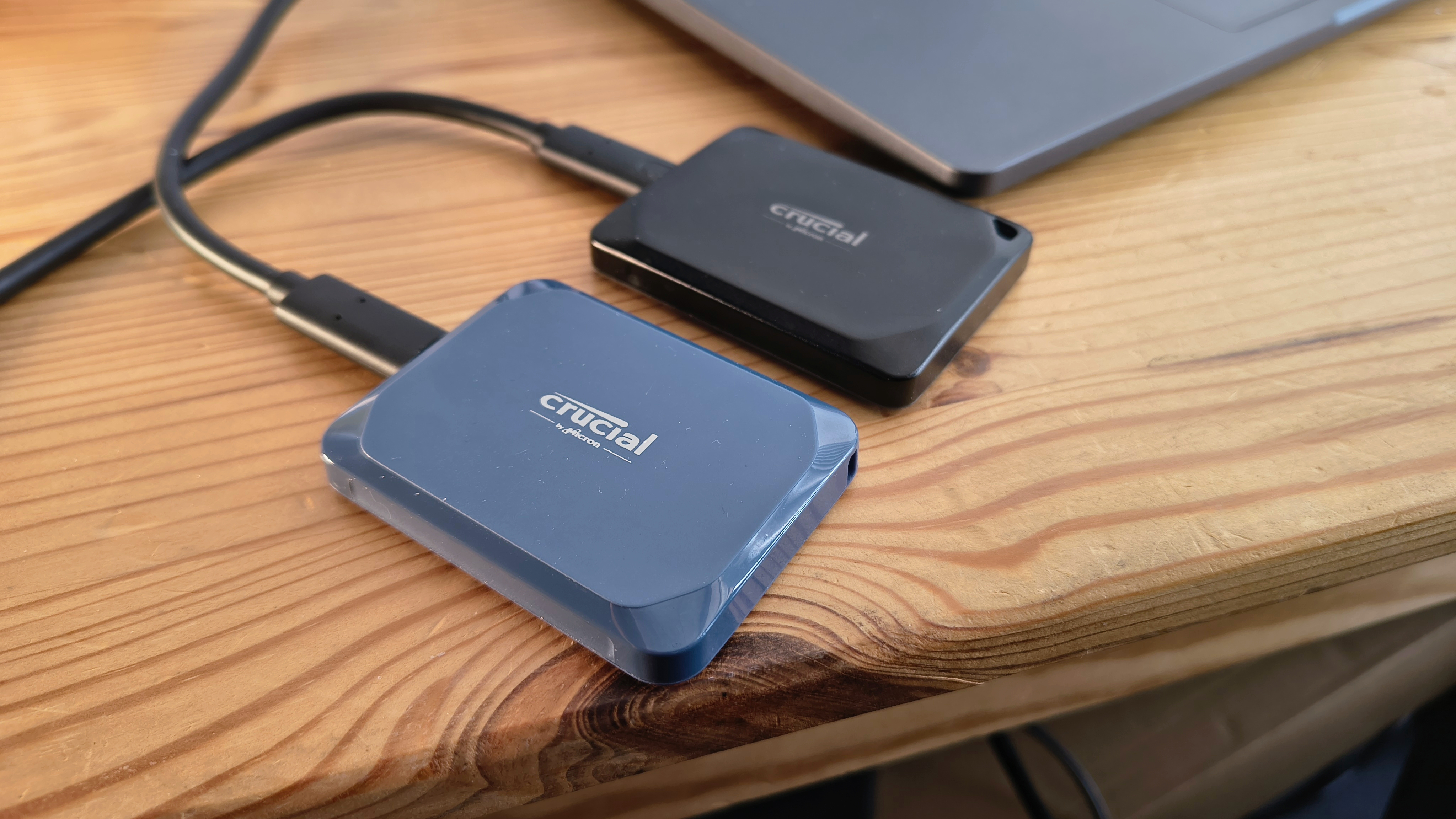
Crucial X10: Pricing and availability
- How much does it cost? From $99.99/109.99/€149.26
- When is it out? Is available now
- Where can you get it? Direct from Crucial or through online retailers like Amazon.
Historically, Crucial SSD products have been significantly more expensive in Europe than in the United States. With the X10 Pro, that differential was 40% more for Europeans in 2023.
While the price per TB is still a better deal for America, the cost differences have come down, partly due to the current weakness of the US dollar.
It’s also worth noting that in many cases, the X10 Pro is only a few dollars, pounds, or euros more than the X10 version at the same capacity, and in a few instances, it’s identically priced.
As the X10 has five capacities, and I wanted to quote at least three regional prices, rather than listing each here, I decided to present the prices as quoted on Amazon in the following table.
X10 Capacities | US Dollar | UK Pound | Euro |
|---|---|---|---|
1TB | $99.99 | £109.99 | €149.26 |
2TB | $162.99 | £159.99 | €270.64 |
4TB | $246.99 | £289.99 | €309.99 |
6TB | $559.99 | £355.99 | €409.99 |
8TB | $439.99 | £494.99 | €559.99 |
One curiosity is that the 8TB model in the US is cheaper than the 6TB option. That’s due to an offer that Amazon has marked down the MSRP of $779.99 to just $439.99.
That’s a great deal, and compared with the launch prices of the X10 Pro, the X10 is much cheaper than its predecessor across the board.
When compared to alternative products, the X10 is more affordable than the SanDisk Extreme PRO Portable SSD, with the 2TB model typically costing £182 in the UK and $196 in the USA. It’s also cheaper than the Samsung T9 and Lexar SL500 Portable SSD.
The only products that undercut it are the Kingston XS2000, limited to a 2TB maximum capacity, the ADATA SE880, with 4TB maximum size, and the Netac Extreme Portable SSD, with 2TB as its largest capacity.
The cheaper products, in general, don’t offer the same level of resilience as the X10, and none of them are available in capacities greater than 4TB.
- Value: 4 / 5

Crucial X10: Specs
Model No. | CT2000X10SSD9 |
|---|---|
Capacities | 1TB/2TB/4TB/6TB/8TB |
Capacity tested | 2TB |
Tested sequential performance (Read/Write) | 4056/3630 MB/s |
Connection | USB 3.2 Gen 2 or Gen 1 on USB-C |
Rugged protection | IP65 |
Encryption | Software only |
Dimensions | 65 x 50 x 9.91 mm (WxHxD) |
Weight | 42g |
Power source | USB-bus power |
Warranty | 3-year limited warranty |
Crucial X10: Design
- X10 Evolved
- Only USB-C
- IP65 rated
When the X10 Pro and X9 Pro first appeared, they struck a clear and audible note with the tech-buying public. Small and easily pocketable, the metal construction of the X10 Pro felt nice to handle, and it offered decent performance at a reasonable price. These all played into a strong product narrative.
The oddly timed release schedule saw the Pro models appear two years ago; now, the non-Pro models have arrived to provide more choice for Crucial customers.
The X10 is identical in size but subtly altered in shape to the X10 Pro, which lacks the metal construction that made its predecessor something you could confidently throw in a laptop bag.
The shape of the plastic X10 is more rounded and less angular, and the lanyard hole on the corner now passes through the side rather than from front to back. The hole on the X9 Pro and X10 Pro also housed a small activity LED, which was omitted from the X10.
Like all of Crucial’s SSDs these days, it comes with an overly short 20cm long USB-C to USB-C cable, and those with only USB-A ports will need to find or buy an adapter.
When you consider that for the 8TB model, a customer might be parting with a substantial amount of money, it is disappointing that Crucial doesn’t include an adapter that would cost them pennies. The X8 came with one, I recall.
One change that is difficult for most people to quantify is that the X10 has an IP65 rating, whereas the X10 Pro only has an IP55 rating.
The differences between these two standards are subtle, but obviously, IP65 is better overall. IP65 provides more comprehensive protection against dust ingress than IP55. The water protection is better, but even IP65 isn’t rated for submersion.

Something that made me laugh about the X10 Pro originally was that Crucial gave it the ability to withstand a fall of 7.5 feet or 2 meters onto a carpeted floor.
Perhaps I’m being overly critical, but I think any SSD that has no moving parts whatsoever and weighs less than 50g should be able to withstand being dropped onto a carpeted floor from almost any height.
Interestingly, the X10 has had that height boosted to 3m, but the warranty has been reduced from five years in the Pro models down to just three years on the X10. I don’t think those two things are related, but it would be hilarious if they were.
Overall, everything about the X10 suggests cost savings, but the majority of critical features are present, and the asking price is lower, so perhaps the customer wins as much as the makers.
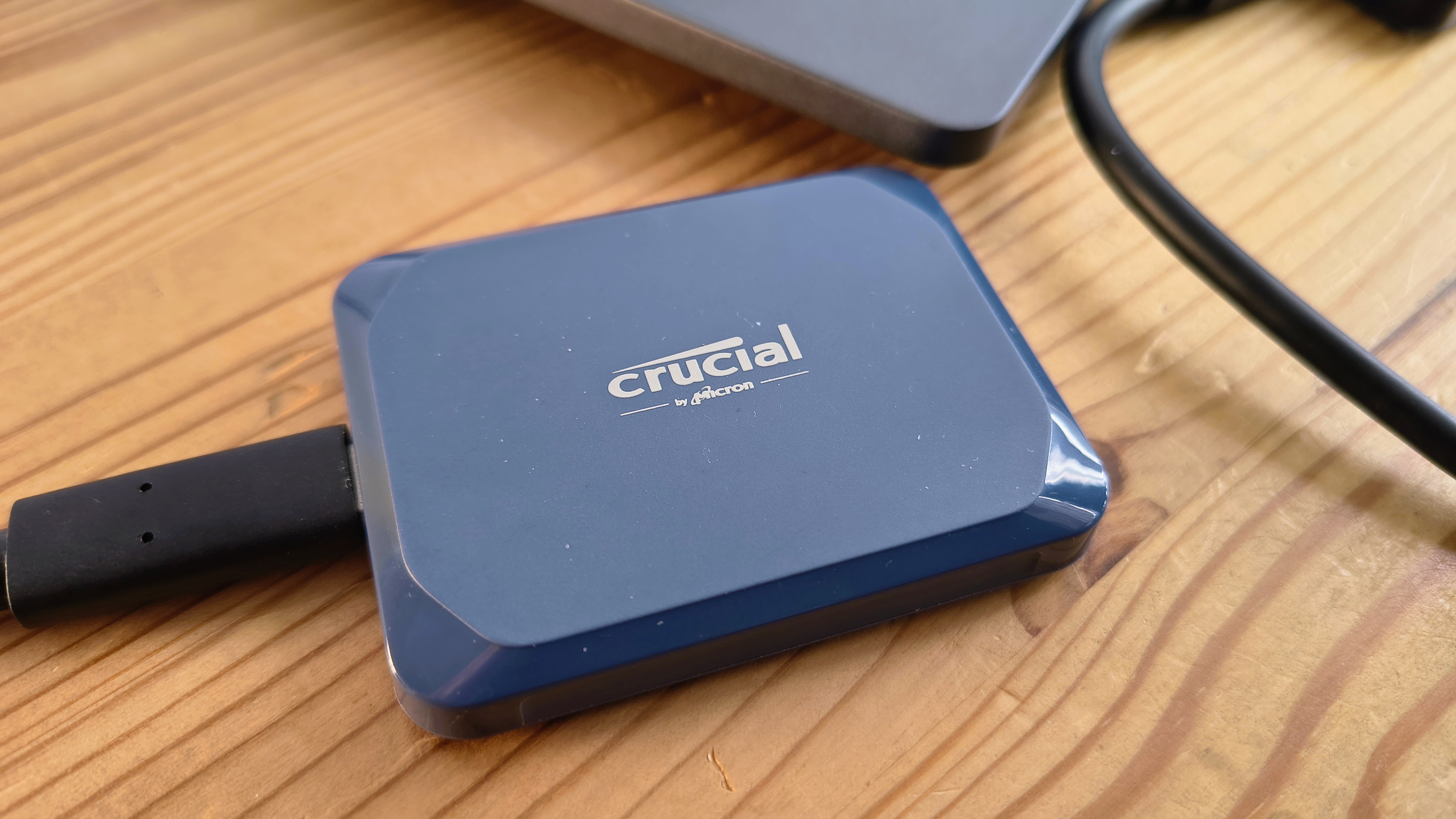
- Design: 4 / 5
Crucial X10: Performance
- Good performance
- No USB 4 support
Bench | Test | Crucial X10 2TB | Corsair EX400U 2TB |
|---|---|---|---|
CrystalDiskMark 8.05 | Default Read | 2003 MB/s | 4056 MB/s |
| Row 1 - Cell 0 | Default Write | 2002 MB/s | 3630 MB/s |
| Row 2 - Cell 0 | Real World Read | 1810 MB/s | 2303 MB/s |
| Row 3 - Cell 0 | Real World Write | 1812 MB/s | 3269 MB/s |
AJA System Test 64GB | Read | 1803 MB/s | 2827 MB/s |
| Row 5 - Cell 0 | Write | 1841 MB/s | 2638 MB/s |
AS SSD | Read | 1804 MB/s | 3506 MB/s |
| Row 7 - Cell 0 | Write | 1786 MB/s | 3197 MB/s |
ATTO | Read | 1870 MB/s | 3780 MB/s |
| Row 9 - Cell 0 | Write | 1870 MB/s | 3470 MB/s |
PCMark Data Drive Bench | Score | 1159 | 2028 |
Since I have all the data from my X9 Pro and X10 Pro reviews, it was tempting to use that for my comparison with the X10. However, with Microsoft’s ongoing attempts to make Windows 11 unusable and various changes to the test benchmarks, I decided against that.
The 2TB model was the only one that Crucial supplied, but according to the manufacturer, all capacities perform equally. However, it’s worth noting that flash storage has wear, typically presented as total bytes written (TBW) over its working life, and this isn’t something Crucial provides for its external SSD storage. However, whatever the TBW of the 1TB model might be, it’s safe to assume that the TBW of the 8TB option is eight times that amount.
Crucial quotes a speed of 2,200MB/s reads and 2,000MB/s writes for this drive, double that of the X9 Pro and X8, which only have USB 3.2 Gen 2 interfaces. This matches the X10 Pro, but it lacks the hardware encryption on that drive, leaving a good reason for Crucial to keep making that model.
The best results show that this drive is a good performer, if not a little bit better than the X10 Pro, when it comes to sustaining write speeds. Even with the tougher tests like AS ASS and AJA, the X10 can hit around 1790MB/s consistently. The X10 Pro managed only 1658MB/s on AJA and 1688MB/s on CrystalDiskMark RealWorld tests.
It would have been wonderful if, alongside the Gen 2x2 support, Crucial had also given the X10 the ability to extract 20 Gbps out of USB4. Alas, that ability does not seem to be in the spec. But, I did notice that I achieved the full 20 Gbps experience using a recent Dell laptop, which claims to have USB4. It may be that a USB 3.2 2x2 controller was included as part of that sub-system,
I strongly suspect that we may need to wait for the X11 or X12 to support true USB4 performance levels, as Crucial has oddly concluded that many people have USB 3.2 Gen 2x2, when in reality, relatively few have that port.
Assuming you have a Gen 2x2 port, this drive performs well. However, if you have USB4, an alternative, such as the Corsair EX400U, can deliver even faster file transfer speeds. The 2TB EX400U costs around $190. That’s an additional cost, and the Corsair drive only comes with 4TB in its biggest configuration.
- Performance: 4 / 5
Crucial X10: Final verdict
To be upfront, I love my Crucial X series drives and use most of them daily, including the X8.
While the X10 isn’t the instant classic that the X10 Pro was, it has enough style and functionality to make it worth considering for those who have USB 3.2 Gen 2x2 ports.
However, if you have a USB4 or Thunderbolt port or you use hardware encryption, then this isn’t a drive you would logically want.
I do hope Crucial has an X11/12 waiting in the wings, as there isn’t much about the X10, other than the 6TB and 8TB options, that breaks new ground.
Should I buy the Crucial X10?
Value | More affordable than its predecessor at launch | 4 / 5 |
Design | Simplified and plastic version of the X10 Pro | 4 / 5 |
Performance | X10 Pro performance or better, but it lacks encryption | 4 / 5 |
Overall | A useful and rugged device with larger capacity options | 4./ 5 |
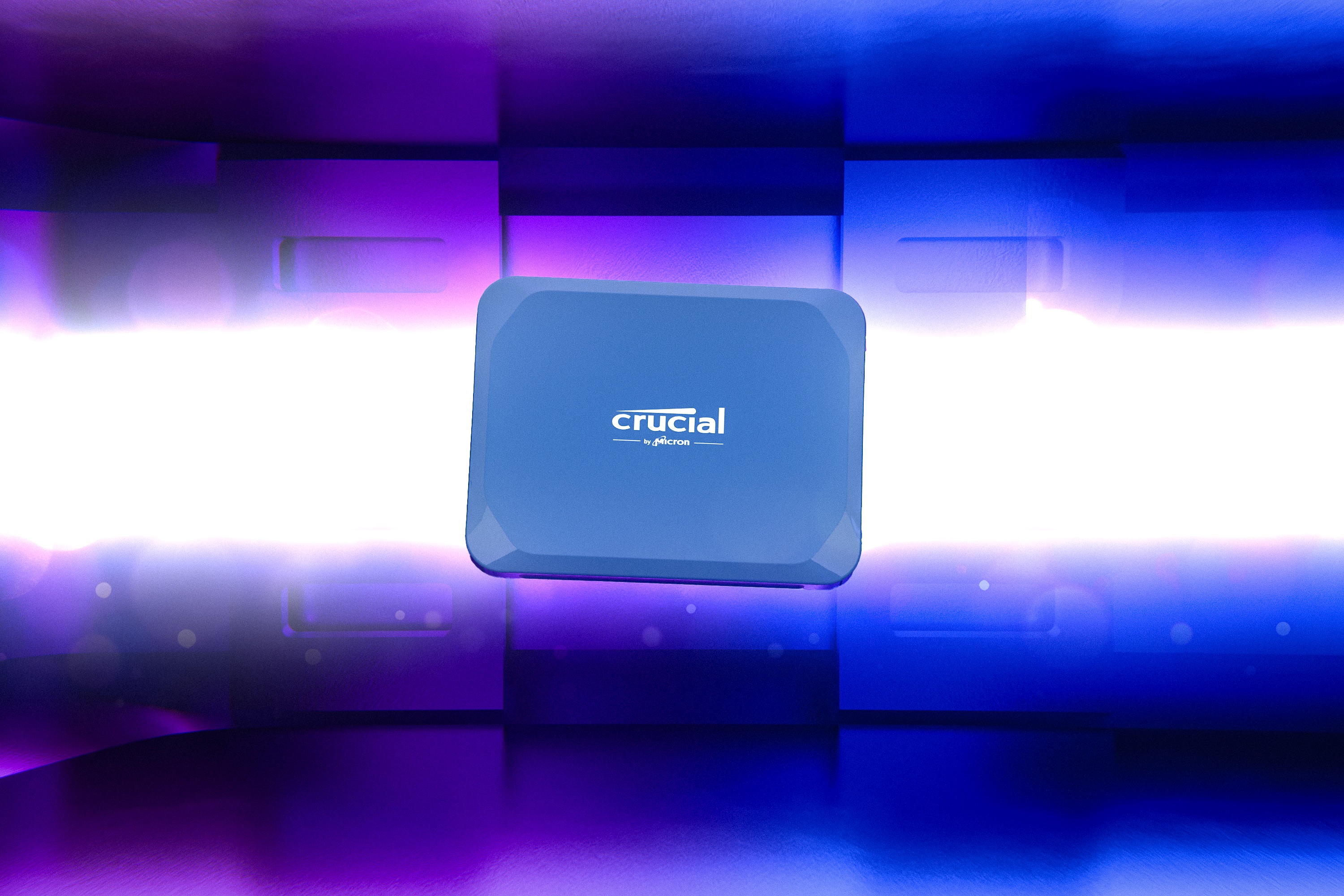
Buy it if...
You need 6TB or 8TB
The prior X series drives were limited to 4TB, but the X10 is available in 6TB and 8TB options for those who require the capacity and can afford the cost. There aren’t many SSDs that offer drives so large.
You have a Gen 2x2 port
One of the quickest Gen 2x2 drives I’ve tested, but you must have that specific port to get the most out of it.
Don't buy it if...
You have USB4
There are specific drives designed for USB4 and Thunderbolt that can outperform the X10 by a considerable amount. Therefore, if you have a USB4 port, get one of those.
You need hardware encryption
The X10 Pro had hardware encryption, whereas the X10 doesn’t offer that technology. It’s still possible to use software encryption via BitLocker and other tools, but that is inherently less secure than hardware encryption.
Also consider
Nextorage NX-PS1PRO Series
One of the first USB4-capable external SSDs available, the Nextorage NX-PS1PRO Series comes in 1TB, 2TB or 4TB capacities. Similar performance to the Corsair EX400U, but larger and more expensive.
Read our full Nextorage NX-PS1PRO Series review
OWC Envoy Pro FX
If you have Thunderbolt 3 ports or intend to add this functionality soon, then the Envoy Pro FX might well be worth your time. A beautifully engineered external storage option that can provide exceptional performance in the right circumstances, the OWC Envoy Pro FX is effective if expensive.
Read our full OWC Envoy Pro FX review
For more options, we've tested out the fastest external SSDs you can get right now.
Mark is an expert on 3D printers, drones and phones. He also covers storage, including SSDs, NAS drives and portable hard drives. He started writing in 1986 and has contributed to MicroMart, PC Format, 3D World, among others.
You must confirm your public display name before commenting
Please logout and then login again, you will then be prompted to enter your display name.
